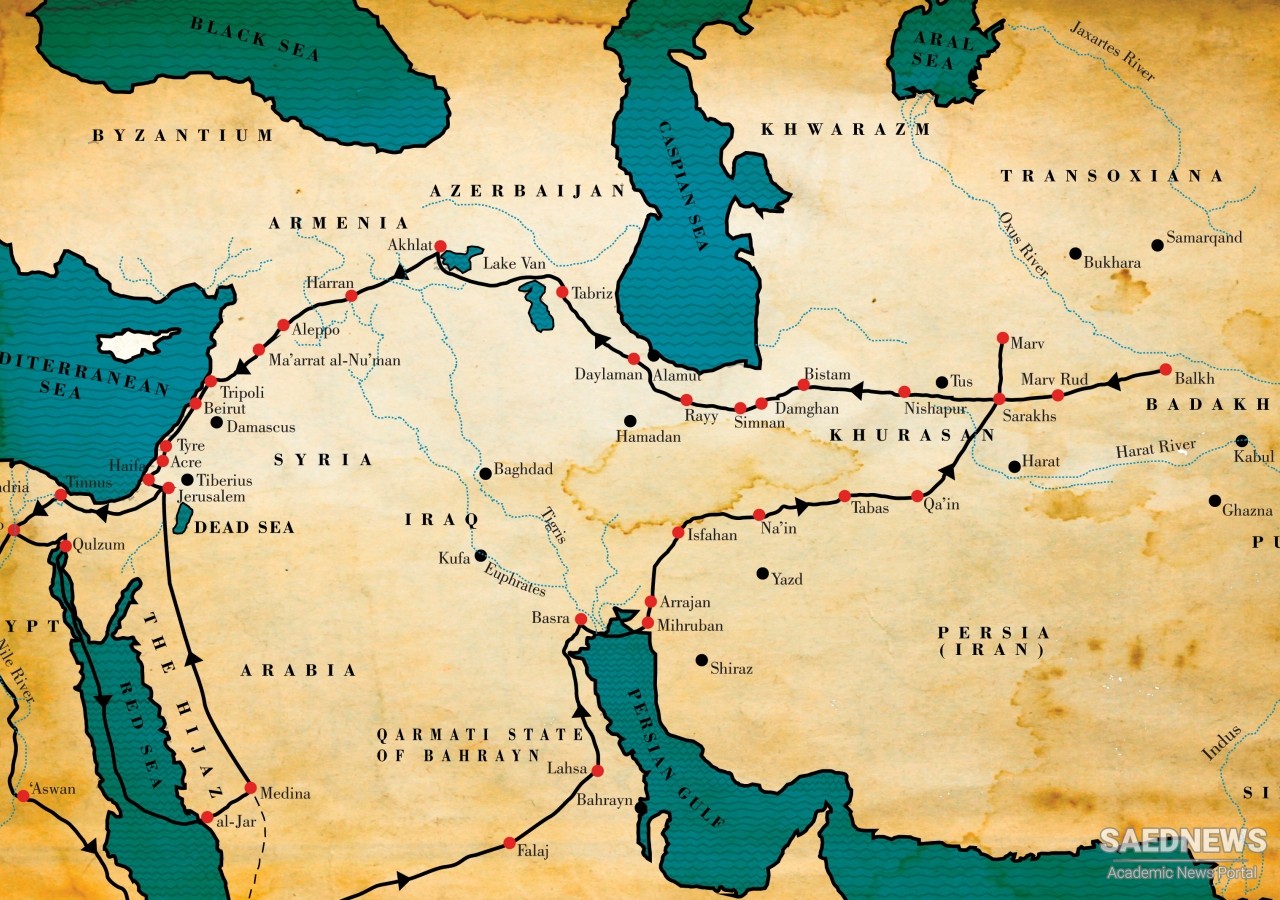The impetus for leaving behind the life of a revenue administrator and poet was a dream-vision that awakened him from a “forty-year sleep of heedlessness” and sent him on a “quest for truth.” Nasir had originally announced his intention to make a pilgrimage to Mecca, but instead of joining a caravan for the Hejaz at Nishapur, he took a northern route across the Caspian coast of Iran, into eastern Anatolia and down into Syria and Palestine.
Although he did make a pilgrimage for Jerusalem, he returned to Palestine and thence made his way to Egypt and Cairo, the seat of the Fatimid caliphate, where he remained for three years, during which he made two pilgrimages to Mecca. Leaving Egypt the third and final time, he made his way down the Nile and across the Red Sea to the Hejaz, crossed the Arabian peninsula to Basra and finally returned to Balkh through southern Iran. The record of his adventures, observations and experiences is contained in his travelogue, the Safarnama.
This book gives us a vivid picture of the 11th-century Islamic world from Transoxania to Egypt, and the author provides minute descriptions of the two major shrines of Islam, the Dome of the Rock complex in Jerusalem and the Haram at Mecca. In addition, Nasir-i Khusraw records interesting architectural features he found in the towns and cities he visited, relates encounters with out-of-the-way people, sets down folklore from various regions, and gives a detailed description of some of the more colorful public ceremonies in Egypt.


 The Prayer Book and Music
The Prayer Book and Music














































